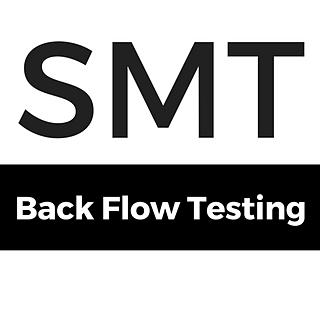Backflow Prevention: It’s About Building Safety and Water Quality
- Steve Tamkee
- Sep 29
- 2 min read

If you think about property maintenance, more often than not, you’re going to first think of HVAC, elevators, lighting, and roofs— you know, the big things. But there’s one critical component quietly doing its job 24/7, protecting both people and infrastructure: your backflow prevention system.
Whether you manage an office tower, retail center, or multi-use facility, you have a backflow preventer that is more than just for show. You see, backflow prevention isn’t just a compliance checkbox. It’s a part of responsible water usage, and a key part of delivering safe, reliable water to tenants, customers, and the community.
Why Backflow Prevention Matters
Backflow occurs when contaminated water flows in the opposite direction and enters the clean water supply. While a device should be in place to prevent this, it sometimes happens due to a drop in pressure or backpressure within the system. That contamination could originate from irrigation systems, fire sprinklers, HVAC equipment, or even nearby construction activities.
Backflow prevention devices stop this from happening, creating a barrier between potable and non-potable water sources. In a commercial setting, where water systems are complex and often high-volume, these devices are not only essential but mandatory.
The Upside of Staying Compliant
Most municipalities in BC (and across Canada) require annual backflow testing for commercial properties. And this isn’t just because we love paperwork. It’s for a good reason. Instead of seeing it as a chore, smart property managers view it as a preventive measure with long-term benefits:
Protects public health and your building’s reputation
Reduces liability risks for owners and operators
Ensures uninterrupted service for tenants and systems
Identifies minor issues before they become costly repairs
Demonstrates due diligence to inspectors and insurers
How to Get Ahead with Your System
A well-managed backflow prevention program is all about routine and reliability. Here’s how to make it seamless:
Book annual testing early: Avoid the last-minute rush and ensure compliance deadlines are met.
Work with certified testers: Only licensed backflow technicians can provide reports that meet municipal requirements.
Log and track results: Keep a digital record of device locations, test dates, and service history for fast access and transparency.
Plan for replacement timelines: Like any equipment, backflow preventers have a finite lifespan. Proactive replacements reduce downtime and surprises.
More Than Compliance
When it comes to devices like backflow preventers, "out of sight" should not mean "out of mind." Though you may not see your backflow preventer every day, you’ll know it's working when the water in your building comes out clean. This device is doing something incredibly important: protecting every drop of water that flows through your building. From fire safety to landscaping, tenant amenities to health standards, backflow prevention supports it all.
By investing in maintenance and testing, you’re safeguarding the future.
Need help staying ahead of your annual backflow testing?
Ask about scheduling, device tracking, or compliance reminders. A little planning goes a long way. Give us a call to book your appointment.


Comments